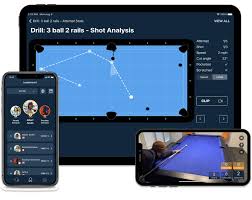Literature Review: Enhancing Billiards Training Through Personalized Feedback and Motion Tracking
- muhammadsirajbilal
- Mar 9
- 3 min read
Updated: Apr 6
As part of my final year project, I researched how wearable sensors and AI feedback can enhance training in cue sports like billiards and snooker - areas that have traditionally lacked the technological advancements seen in other sports. The goal was to develop a low-cost system, iCue, that can track player motion, provide real-time feedback, and support long-term improvement through analytics.

From Mirrors to Motion Sensors
Historically, players have used basic tools like mirrors or laser pointers to check stroke alignment. These tools, while helpful for beginners, do not capture nuanced motion data or offer performance tracking (Nguyen et al., 2021).
The development of compact inertial sensors - like the MPU-6050, which combines a gyroscope and accelerometer - has enabled accurate real-time tracking of six-axis movement. These sensors are now common in sports wearables, VR applications, and robotics (Random Nerd Tutorials, 2022).
Existing Cue Sport Tools
Some cue training devices have emerged over the years:
DigiCue is a cue-mounted IMU sensor that vibrates to warn users about flawed stroke mechanics. It's simple and unobtrusive but doesn't provide session logs or improvement metrics (Billiard Warehouse, 2021).
DigiCue BLUE adds Bluetooth connectivity and a mobile app to view shot data such as acceleration, stroke smoothness, and follow-through (OB Cues, 2023).
DrillRoom uses smartphone cameras and AI to visualize shot angles and table layout. While technically impressive, it requires stable lighting and careful calibration, limiting casual use (DrillRoom, 2023).
AI in Sports Coaching
AI and machine learning (ML) have revolutionized training in sports like tennis, golf, and basketball. For instance:
Zepp Tennis and Golf use sensors and AI to assess swing type, power, and follow-through, showing measurable improvements in form over time (The Guardian, 2014).
ShotTracker uses sensors on basketballs and players to track accuracy and performance in real time (Designboom, 2014).
Academic studies have confirmed that AI-based coaching improves consistency and reduces training duration in sports such as rowing, table tennis, and athletics (Wang et al., 2021; Saponara & Giannetti, 2020).
💡 How iCue Fits In
The iCue system brings these benefits into cue sports by combining:
A low-cost MPU-6050 IMU to capture cue stick motion
An ESP-WROOM-32 module for wireless communication
A React Native app that delivers real-time insights
Firebase to store session data and enable cloud syncing
Unlike camera-based systems, iCue works in any environment, requires no external setup, and supports real-time, personalized feedback through threshold-based analysis (ElectronicsHub, 2021).
📊 Table: Cue Sports Training Tools Comparison
Tool | Motion Tracking | Analytics | AI Feedback | Mobile App | Price |
DigiCue | Yes (IMU) | No | No | No | ~$99 USD |
DigiCue BLUE | Yes (IMU + BT) | Yes | No | Yes | ~$129 USD |
DrillRoom | No (Camera only) | Yes | Limited | Yes | $200+ |
iCue | Yes (MPU-6050) | Yes | Rule-based | Yes | <$50 USD |
Conclusion
Cue sports still lag behind other sports in training innovation. While systems like DigiCue and DrillRoom have paved the way, they either lack feedback depth or are too environment-sensitive. iCue fills this gap by offering a low-cost, portable system that combines motion tracking, real-time alerts, and a cloud-connected mobile interface, making smart coaching accessible to all.
📚 References
Billiard Warehouse (2021) DigiCue Training Aid. Available at: https://www.billiardwarehouse.com/accessories/digicue.html (Accessed: 9 March 2025).
Designboom (2014) ShotTracker wearable basketball analytics. Available at: https://www.designboom.com/technology/shottracker-wearable-technology-basketball-11-23-2014/ (Accessed: 9 March 2025).
DrillRoom (2023) AI-powered snooker training. Available at: https://drillroom.ai/ (Accessed: 9 March 2025).
ElectronicsHub (2021) Introduction to ESP32-WROOM-32 Module. Available at: https://www.electronicshub.org/introduction-to-esp32-wroom-32/ (Accessed: 9 March 2025).
Nguyen, T. M. et al. (2021) ‘A review of inertial sensor-based motion capture systems’, Sensors, 21(15), pp. 1–22. Available at: https://www.mdpi.com/1424-8220/21/15/5281 (Accessed: 9 March 2025).
OB Cues (2023) DigiCue BLUE Mobile App Overview. Available at: https://sites.google.com/view/digicueblue/home (Accessed: 9 March 2025).
Random Nerd Tutorials (2022) MPU-6050 with ESP32 and Arduino. Available at: https://randomnerdtutorials.com/esp32-mpu6050-accelerometer-gyroscope-arduino/ (Accessed: 9 March 2025).
Saponara, S. and Giannetti, F. (2020) ‘Wearable sensors for AI-based sports coaching: A review’, IEEE Access, 8, pp. 137586–137601. Available at: https://ieeexplore.ieee.org/document/9144915 (Accessed: 9 March 2025).
The Guardian (2014) Zepp Tennis sensor review. Available at: https://www.theguardian.com/technology/2014/jul/14/zepp-sensor-tennis-raquet-mounted-app-review (Accessed: 9 March 2025).
Wang, J. et al. (2021) ‘AI-based technique analysis in rowing using inertial sensors’, Sensors, 22(4), pp. 1–15. Available at: https://www.mdpi.com/1424-8220/22/4/1307 (Accessed: 9 March 2025).






Comments